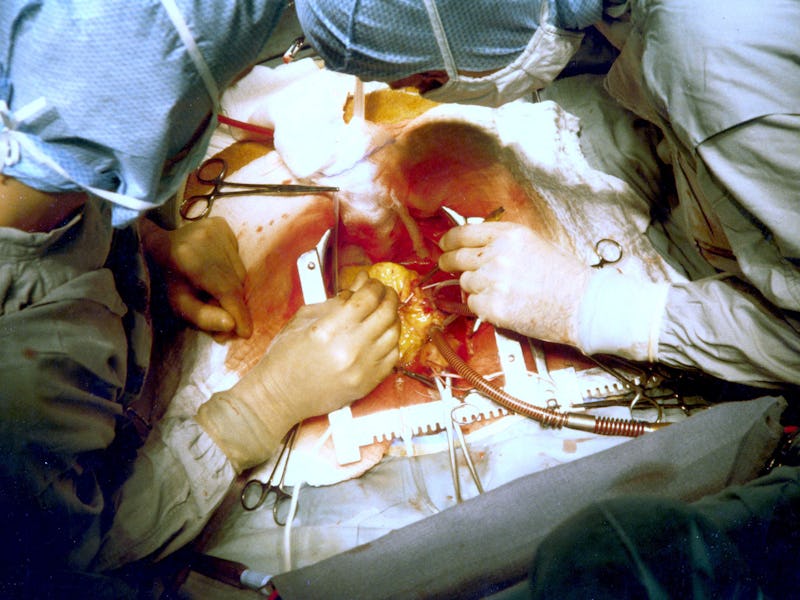How Common Sense Solutions Help Save Heart Attack Patients
The best ideas in medicine are sometimes the simplest.

From 2003 to 2013, the death rate from heart disease dropped by a staggering 38 percent — and not because of a new medical breakthrough or miracle technology. In fact, these excellent results come courtesy of a checklist, an improved protocol for patients requiring immediate medical attention. Emergency care physicians are delivering better, faster care to people in the middle of a heart attack by replacing an old technique with a new one. Nothing fancy here.
Each year, heart attacks strike 735,000 people, and kill 117,000. An individual suffers a heart attack when their artery becomes blocked, preventing blood—and therefore oxygen—from reaching heart muscle. As time passes, that tissue begins to die. Doctors must open the artery by pushing a catheter into the heart, inflating a ballon that knocks away the clog, and keeping the artery open by a tiny wire cage called a stent. This is much easier said than done. Years ago, it took most doctors more than two hours to get blood to flow back into patients’ hearts.
But, in the last decade, the American Heart Association and the American College of Cardiology have successfully pushed forward a campaign across the country to shorten this procedure. As the New York Times reported on Wednesday, those changes affected everyone from first responders to surgeons.
Paramedics are now tasked with taking a patient’s electrocardiogram as soon as they arrive on the scene, sending that information straight to the emergency room so that doctors can assess the patient before even seeing them. Hospitals can summon medical staff tasked to treating attacks with a single call.
The Times article goes on to report:
“The relatively languid step-by-step preparation of patients in the emergency room was transformed. Now when a patient arrives, staff members swarm the stretcher and within five minutes undress the patient, place defibrillator pads on the chest, insert two intravenous lines, shave the patient’s groin where the catheter will be inserted and snaked up to the heart, supply oxygen through a cannula in the nose, and provide medications like morphine, a blood thinner, and a drug to control heart rhythms.”
These days, almost every hospital in the U.S. can treat half their heart attack patients in 61 minutes or less. It’s a feat that stretches across all hospitals in all parts of the country—be they in smaller, underfunded rural towns, or overflowing urban sprawls. It’s a fantastic reminder that simple, inexpensive changes to things like procedures can go a long way in helping sick individuals get better — especially in areas that don’t readily have access to state-of-the-art equipment.
Sometimes, you don’t need a silver bullet to save more lives. Being vigilant about plucking away the inefficiencies and wasted moments is just as important to improving medical care to those in need.